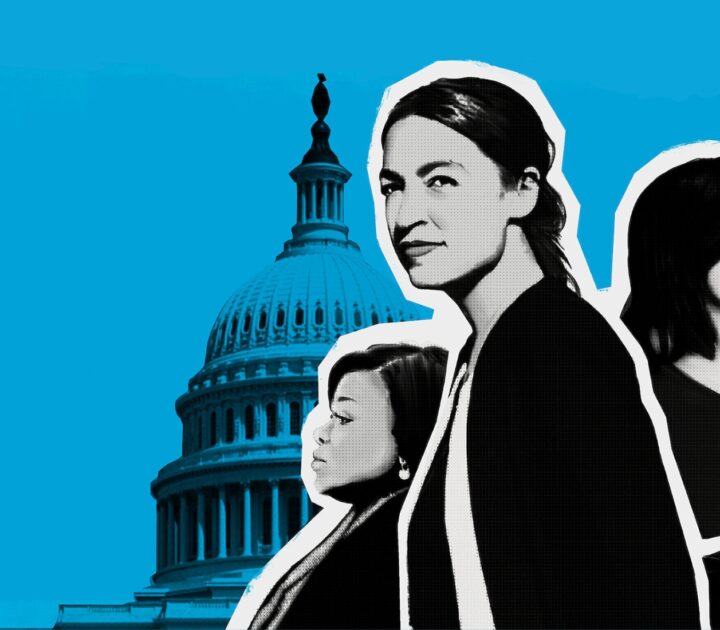
Removing your organizational clutter
Like a house at the end of a long winter, most enterprises are full of clutter. While domestic mess may include outgrown clothing, broken sports equipment, and general dust and dirt, organizational clutter comes in the form of unprofitable products or services, redundant or duplicate processes, organizational structures and reporting lines that are no longer fit for purpose, KPIs that do not align with new strategic objectives, and/or objectives that are no longer relevant. All this clutter leads to complexity that gums up and slows down the organization. Complexity is a by- product of normal business operations, yet most companies tolerate far more of it than they should. In this article, we explore how to effectively deal with the complexity that lurks within your company. It is about clearing up the clutter, simplifying your organization and keeping it that way.
Complexity has a bad reputation, but it is not always damaging. Indeed, there are plenty of examples of good complexity. It is what makes you different and why your competitors have a hard time copying you. In academic terms, it is an isolating mechanism: it protects your source of competitive advantage from fast and easy imitation. This is complexity that you want to optimize. Bad complexity, on the other hand, destroys value and inhibits your ability to compete. If the response to good complexity is optimization, then the response to bad complexity should be elimination.
Let’s take a product example. In the early 2000s, LEGO was struggling. Fierce competition, a high cost base, and the substitution of plastic toys for video games among LEGO’s key 5 to 12-year-old boy demographic conspired to push the company into ever expanding losses. The company responded to these threats head on. Among other moves, it targeted new consumer segments with innovative product offerings, launched company- owned stores and expanded its theme parks. These moves helped to increase revenues, but the underlying complexity they created wreaked havoc with the bottom line. By 2003 the company was one quarter away from bankruptcy. The new CEO, Jørgen Vig Knudstorp, implemented a simplification agenda called “back to the brick,” which radically reduced product and process complexity. LEGO is now much simpler and more profitable than ever.
A structured approach to simplification
To help manage both good and bad complexity, we propose the SPRING Clean framework. Each letter of the word SPRING stands for a different step: Standardize, Prioritize, Rationalize, Institutionalize, Navigate and Govern. The first three steps – Standardize, Prioritize and Rationalize are tackled concurrently. Their objective is to remove bad complexity and optimize good complexity. This is the starting point of the simplicity journey.
The final three steps – Institutionalize, Navigate and Govern – are about keeping good complexity optimized and preventing bad complexity from returning. Just as the first three steps are about removing complexity, the last three are about maintaining simplicity. This is an important distinction. Removing complexity is nice, but staying simple is the source of long- term benefits.
The SPRING Clean framework will help build a mindset of simplicity that permeates your enterprise. It forms a simplicity lens through which to see the world, where decisions are assessed, at least in part, on their potential impact on organizational complexity. Rules, metrics and governing structures are developed to guide organizational decision-making to optimize good complexity and eliminate bad complexity, much in the same way that organizations today make decisions based on their effect on “customer orientation” or “shareholder value.”
Attaining simplicity
The first step in building a simpler organization is to manage the existing complexity. Most companies operate amid a lot of clutter, and it can be difficult to ascertain what is valuable and what is not. Consider the famous Pareto Principle, sometimes referred to as the 80/20 rule, which states that a large percentage of “effects” arises from a small percentage of “causes.” For example, it has often been shown that 20% of customers account for 80% of profits, or that 20% of products account for 80% of sales. Many of the remaining customers or products (or systems or processes) not only do not add a lot of value, they destroy it. Thus, an organization could vastly increase its profits without any new investment, revenues or products by simply cutting out these value destroying elements.
However, the practical application of this policy is not straightforward. How can you know if something is too complex? And further, whether this complexity is good or bad? In order to attain a simpler form, we turn to the first three elements of the SPRING Clean framework: Standardization, Prioritization and Rationalization. The simultaneous examination of these three components is necessary to manage existing complexity.
Simplicity begins with doing the same things the same way. Doing the same things differently across an organization adds cost and inefficiency, leads to duplication and builds complexity. For these reasons, standardization is a critical piece of the simplicity puzzle. Organizations that have successfully simplified have managed to standardize many of their elements (for example, systems or processes) along the way.
Some elements need to be standardized while others need to be eliminated or rationalized. However, in order to know which is which, their effect on complexity must be assessed. This assessment results in a process of prioritization.
Simplification decision tree
Prioritizing can be done by asking two questions. First, does the element provide a point of competitive differentiation and second, does it need to be locally adapted. In Figure 1, we provide a simplification decision tree that examines the case for organizational processes. A similar decision tree can be constructed for other organizational elements, such as products, systems, suppliers or customers.
Figure 1: Simplification decision tree: Example for processes
The first decision relates to the competitive differentiation of the process. This can be determined based on the processes’ contribution to an organization’s competitive advantage. If the company does not use the process as a point of differentiation (indeed most processes are not) then ask whether it can be eliminated.
At this point, strong leadership is required to ensure that unnecessary processes are eliminated since cuts often face strong resistance from specific stakeholders. If a process cannot be eliminated, then the next question relates to the need for local adaptation. The answer to this question determines whether the process can be standardized, and, if so, what type of standardization is possible.
In cases where a process is NOT strategically important and does NOT require local adaptation, the resulting action should be rigorous standardization using industry standards. Alternately, the process could be considered as a candidate for outsourcing. It makes little sense to run such processes differently in various parts of the company. Let’s take an example from sales management. The fundamental core of customer relationship management (CRM) such as sales tracking and lead management can be standardized globally, as many firms have done with tools like Salesforce.
In some instances a case can be made for processes that are NOT strategically important but nevertheless DO require local adaptation. These cases typically involve local regulations, customs or language that cannot easily be centrally or globally standardized. For the sales example, the management of entertainment expenses might fall into this category. As a general rule, though, since exceptions add cost and complexity, such processes should be kept to a minimum.
The approach to standardization shifts when the answer to the strategic differentiation question is positive. In situations where the process IS strategically important but does NOT require local adaptation, the approach should be to standardize but to do so using proprietary company standards. In such cases it makes little sense to run the process differently throughout the enterprise. However, because the process forms part of an organization’s competitive advantage, it does not make sense to adopt the same standard as a competitor and thus forgo the opportunity for differentiation. Examples within sales include commission assignments, the opportunity qualification process and lead stratification. These processes are strategic and differentiating, but typically do not vary a great deal across an organization.
Finally, in the case of processes that are BOTH strategically important and require local adaptation, an exception to the standard can and indeed should be made. The lack of an exception in such a case can inhibit local flexibility and agility. Pricing management might be an example of such a process within sales. Pricing is strategically important and often requires local adaptation based on consumption patterns, local competitive dynamics and local cost structures.
This decision tree can be robustly applied across all processes and, indeed, other organizational elements, including systems, products, suppliers and customers. In the book Simply Effective, Ron Ashkenas tells the story of Johnson & Johnson’s (J&J) Quality Assurance (QA) division. QA was being done across of the world with little coordination or consistency. However, increasingly globalized drug discovery, development and distribution combined with coordinated regulation created a need for more standardized QA approaches across J&J. The company implemented an “integration and simplification” initiative that brought people together to examine local processes and systems and identify targets for a global standard. First, the strategic value of each process or system was assessed, and from this a global standard was identified. Many smaller and non-conforming systems and processes were eliminated at this stage. The global standard was not appropriate in all cases, so exception requests were evaluated and in some cases approved. A high level of engagement and consultation was maintained throughout the process. The overall impact of the integration and simplification initiative resulted in a 50% increase in productivity of the QA function over four years.
The results of simplification are not always so positive. MDS, a medical research company and J&J competitor, faced a similar set of challenges. Clinical research labs across the world operated independently, using distinct processes and completely different IT systems. Like J&J, MDS undertook a global standardization initiative, but decided to completely outsource the project to an external consulting firm. This was a risky move, since processes like the efficient management of clinical trials were a source of competitive differentiation for MDS. The consultant custom developed a solution that was then imposed on the local operating units. Consultation was kept to a minimum and little attempt was made at local adaptation. The result was a global standard that was heavily resisted and failed to take into account local jurisdictional requirements. After five years of development and massive cost over-runs, local units were still using legacy systems for the majority of applications. Clearly, MDS failed to effectively standardize its operations.
Maintaining simplicity
As most dieters will tell you, losing weight is tough, but keeping it off is the real challenge. The same is true for organizational complexity. It can be cut in big visible chunks, as described earlier, but it grows almost imperceptibly, bit by bit, decision by decision. Without clear direction and strong governance, it creeps back and returns stronger than ever. One of the tricky things about complexity is that it operates in the aggregate. Each individual component can be justified individually, be it a new process, KPI, product or whatever. However, when these individual decisions are aggregated, complexity follows.
The ING of SPRING Clean is designed to maintain the hard fought and won simplicity gains and to prevent bad complexity from returning. Institutionalization means that simplicity becomes part of an organization’s culture and fabric. To be most effective, simplicity should be incorporated into an organization’s values and built into its strategy. It should also be communicated clearly from the very top, and used in performance evaluation KPIs across the company.
An example of institutionalization can be found in Nestlé Ecuador. A slowing economy had prompted a flurry of product innovation, leading to an unsustainable number of new products, most of which were not sufficiently promoted. A lax approach to standardization had resulted in different ways of doing things in each business unit, function and geographic region. IT systems had proliferated as business units pursued their own plans and agendas. Growth was the main criterion for performance assessment and its effect on growing complexity was significant. The net effect of these approaches was a stagnant top line and a rapidly shrinking bottom line. Employee engagement had fallen dramatically, and customer satisfaction was down.
The new CEO, appointed in late 2012, traveled throughout the country asking employees what they thought was wrong with the company and how they would suggest fixing it. Based on this input, he developed a new strategy, collectively called “the Mission,” which was actively and visibly communicated throughout the organization. Specifics of the Mission could be found in every conference room, at each building entrance, within all elevators and on many walls. The CEO and his team created monthly videos and quarterly “all hands” meetings to reinforce the Mission and review its performance. The institutionalization of the Mission was hugely successful, and midway through 2013 every single employee could understand how it cascaded down to his or her level.
While institutionalization is important, maintaining simplicity requires careful navigation. Navigation works most effectively when the rules are clear. The Miramax film studio amassed dozens of Oscars by sticking to a simple formula: each film was based on a single human condition, i.e. love or envy, the main character was appealing but flawed, there was a clear story line, and the film had a firm cap on production costs. These simple rules resulted in vastly different movies, such as the Crying Game, Pulp Fiction and Shakespeare in Love, which were all individually successful.
Similarly, the new Nestlé Ecuador CEO organized the Mission around three straightforward themes: people first, win the hearts and minds of customers, and efficiency in everything we do. These themes became the embodiment of the company strategy. While generic in the aggregate, the themes were cascaded down into clearly defined sets of processes and outcomes, including a new set of KPIs to evaluate and reward performance.
Strategic priorities such as those embodied in the Mission are useful when navigating the decision making process, including determining what NOT to do. Complexity grows decision by decision, and consistent governance is required to maintain simplicity. In Ecuador, many projects that did not fit within the Mission were shelved, and over 200 products were discontinued. Strong governance was needed to make these cuts, and even stronger governance was required to ensure that projects and products were not reintroduced when Nestlé’s performance improved, as it did by late 2013.
The simple answer to sustained performance
Most managers acknowledge that they have a complexity problem. However, few organizations take a structured approach to solving it. Does your company have a Complexity Management Department, a Chief Simplicity Officer or explicit KPIs linked to reducing complexity? Complexity is a shared problem, and most organizations are ill equipped to cope with it in a cross-enterprise manner. The result is that the management of complexity is often diffused throughout an organization, and thus typically becomes no one’s responsibility to solve.
Managing complexity and maintaining simplicity requires a structured, organization-wide approach. Like our houses, and indeed our lives, most organizations need a good SPRING Cleaning.





